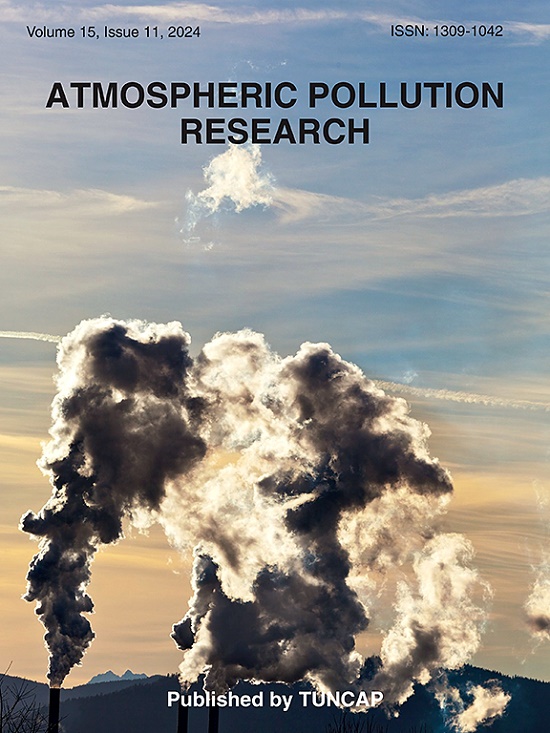Numerical investigation of building gap effects on traffic pollutant dispersion in urban networks with intersecting streets
IF 3.9
3区 环境科学与生态学
Q2 ENVIRONMENTAL SCIENCES
引用次数: 0
Abstract
Wind passing through the gaps between street-facing buildings has the effects of accelerating the natural removal of air pollutants in street canyons, with wider gap conventionally leading to better air quality. However, previous studies oversimplify the canyons by modeling them as isolated systems with only two rows of buildings, neglecting the blocking effects of surrounding building complexes. This leads to an overestimation of the gap flow's ability to flush out traffic pollutants. In this study, to better represent real urban configurations, a typical network with two crossing streets bounded by four complexes is investigated numerically, where one of the streets is parallel and another is perpendicular to the incoming wind. The gap layouts with different street continuities (SC = 0.483–1, building-to-street length ratio) are considered. Results show that for the parallel street, the air quality improves in a linear trend as the gap width is increased. However, the relationship between the gap width and air quality is not linear for the perpendicular street. The worst air quality in the street occurs at an intermediate gap width of SC = 0.759, while the air quality is good for both cases when the building gap width is significant (SC = 0.483) or can be neglected (SC = 1, no gaps between buildings). This finding challenges the conventional understanding and highlight the need to reassess the impacts of building gaps on urban air environments.

城市交叉街道网络中建筑间隙对交通污染物扩散影响的数值研究
风穿过临街建筑之间的空隙,加速了街道峡谷中空气污染物的自然清除,而更大的空隙通常会带来更好的空气质量。然而,先前的研究将峡谷建模为只有两排建筑物的孤立系统,从而过于简化了峡谷,忽略了周围建筑群的阻挡效应。这导致人们高估了间隙流清除交通污染物的能力。在这项研究中,为了更好地代表真实的城市配置,我们对一个典型的网络进行了数值研究,该网络有两条交叉的街道,由四个综合体包围,其中一条街道平行,另一条街道垂直于入射风。考虑不同街道连续度(SC = 0.483-1,建筑与街道长度比)的间隙布局。结果表明:对于平行街道,空气质量随间隙宽度的增加呈线性改善趋势;然而,对于垂直街道,间隙宽度与空气质量之间的关系不是线性的。街道空气质量最差发生在中间间距宽度SC = 0.759时,当建筑物间距宽度显著(SC = 0.483)或可以忽略(SC = 1,建筑物之间没有间隙)时,街道空气质量较好。这一发现挑战了传统的理解,并强调需要重新评估建筑间隙对城市空气环境的影响。
本文章由计算机程序翻译,如有差异,请以英文原文为准。
求助全文
约1分钟内获得全文
求助全文
来源期刊

Atmospheric Pollution Research
ENVIRONMENTAL SCIENCES-
CiteScore
8.30
自引率
6.70%
发文量
256
审稿时长
36 days
期刊介绍:
Atmospheric Pollution Research (APR) is an international journal designed for the publication of articles on air pollution. Papers should present novel experimental results, theory and modeling of air pollution on local, regional, or global scales. Areas covered are research on inorganic, organic, and persistent organic air pollutants, air quality monitoring, air quality management, atmospheric dispersion and transport, air-surface (soil, water, and vegetation) exchange of pollutants, dry and wet deposition, indoor air quality, exposure assessment, health effects, satellite measurements, natural emissions, atmospheric chemistry, greenhouse gases, and effects on climate change.
 求助内容:
求助内容: 应助结果提醒方式:
应助结果提醒方式:


